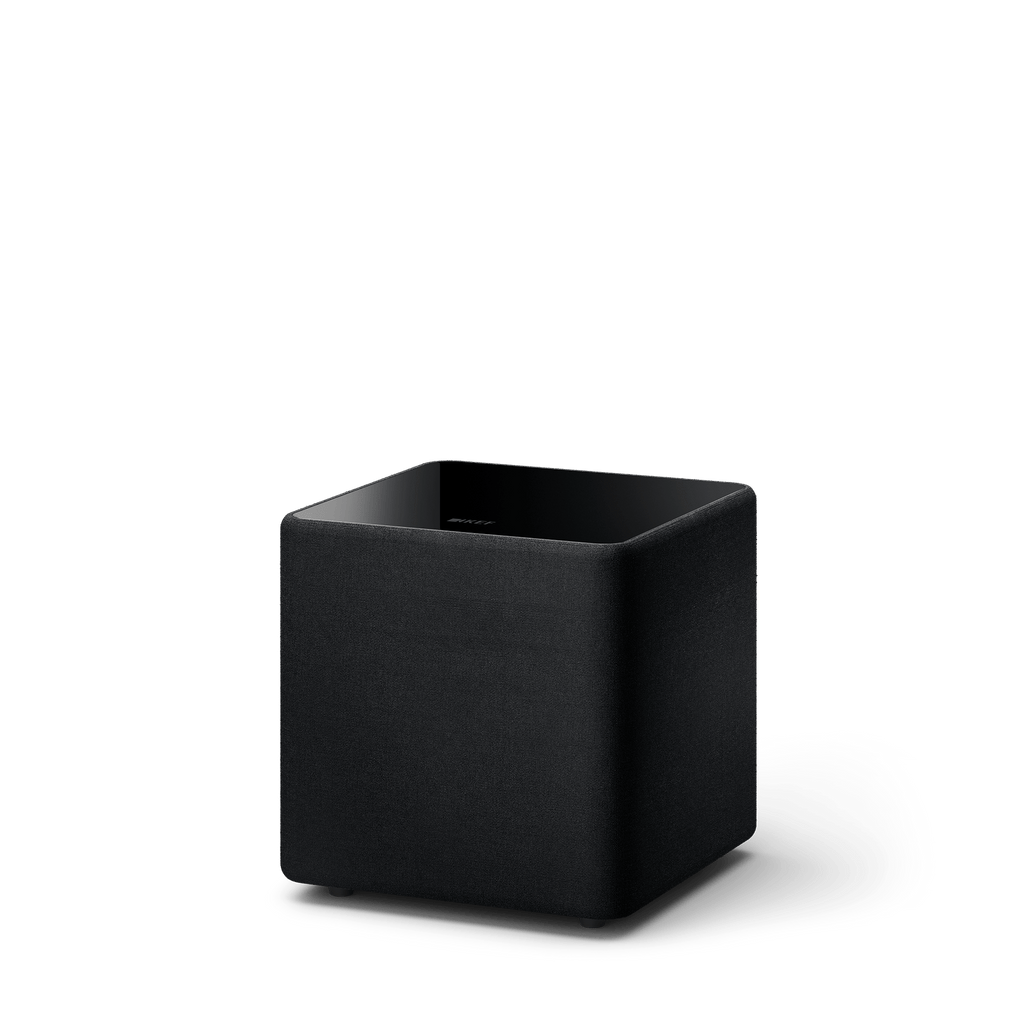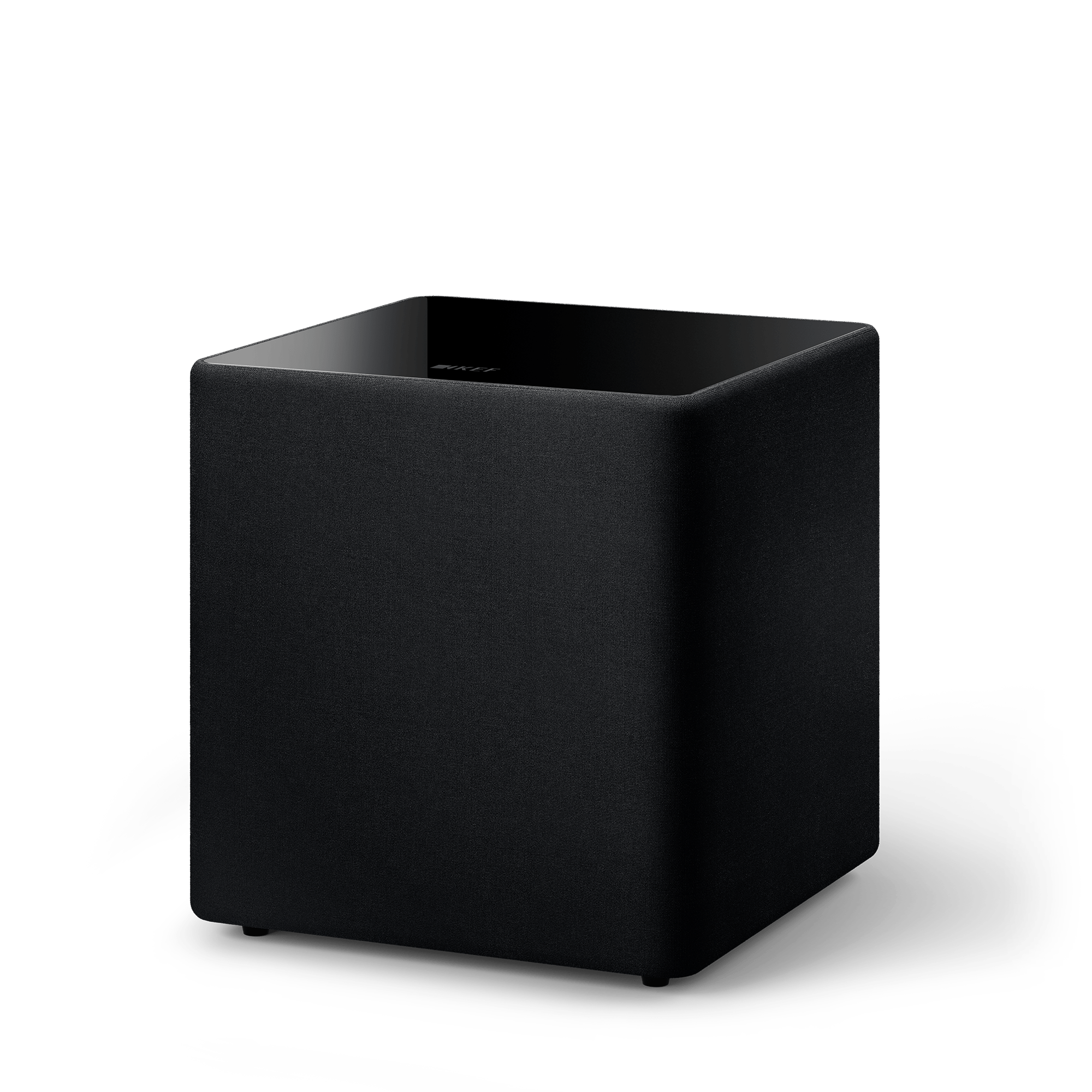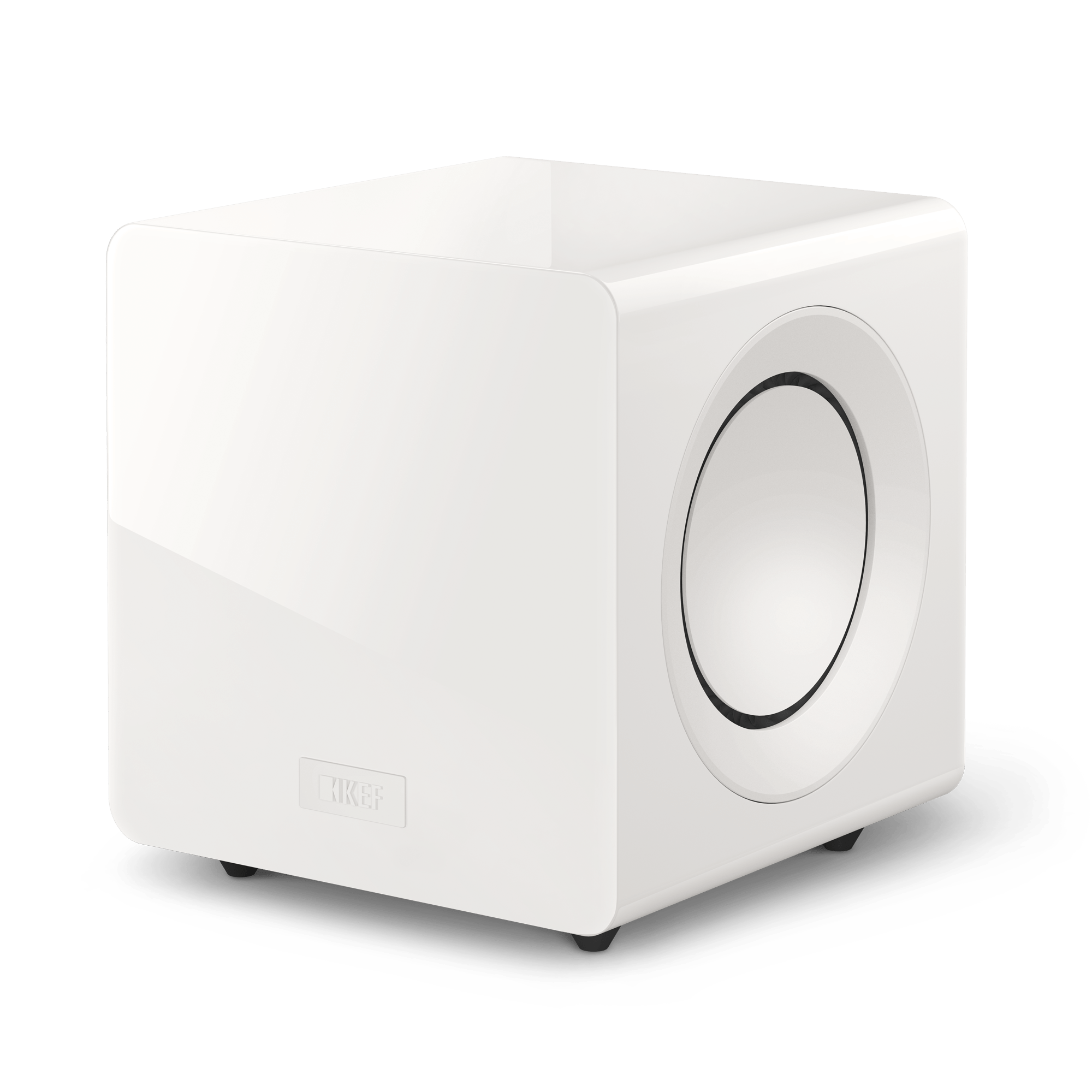Adding a subwoofer is arguably one of the most exciting upgrades to your home theatre or audio sound system. Subwoofers have become a standard component in high-fidelity systems and can turn watching a movie or listening to music into a more thrilling and immersive experience.
Our engineering team understands the importance of doing one thing well: designing the finest loudspeakers and wireless speaker systems. Driven by a shared passion for innovation and acoustic authenticity, this focus remains at the forefront of every project, whatever the speaker model.
Since subwoofers are only specialised loudspeakers, it stands to reason that designing a world-class subwoofer is in the same category as designing a world-class three-way loudspeaker. It’s all in the science.
Our engineering team understands the importance of doing one thing well: designing the finest loudspeakers and wireless speaker systems. Driven by a shared passion for innovation and acoustic authenticity, this focus remains at the forefront of every project, whatever the speaker model.
Since subwoofers are only specialised loudspeakers, it stands to reason that designing a world-class subwoofer is in the same category as designing a world-class three-way loudspeaker. It’s all in the science.
What is a Subwoofer?
A subwoofer is simply a speaker that reproduces the lowest audio frequencies possible. They are specialised audio products that effortlessly enhance the beats of your favourite songs and bring the action of classic blockbusters to life.
Subwoofers are traditionally quite big because a large cabinet is necessary to create low notes, but this doesn’t always have to be true.
Discover our extensive range of subwoofers below:
Subwoofers are traditionally quite big because a large cabinet is necessary to create low notes, but this doesn’t always have to be true.
Discover our extensive range of subwoofers below:
Integrate a Subwoofer With Your LS Wireless Speakers
Assuming you’ve decided to pair a subwoofer with one of our active music systems - LSX II LT, LSX II, LS50 Wireless II, or the flagship LS60 Wireless – here are some helpful tips on how to set up a subwoofer with your KEF LS Wireless speakers.
You can pair any subwoofer with one of our systems. However, if you’re still deciding on which way to go, it’s helpful to remember that our engineering team has taken the guesswork out of integrating a KEF subwoofer with a KEF active music system – their expertise and experience are available to you in the KEF Connect app.
You can pair any subwoofer with one of our systems. However, if you’re still deciding on which way to go, it’s helpful to remember that our engineering team has taken the guesswork out of integrating a KEF subwoofer with a KEF active music system – their expertise and experience are available to you in the KEF Connect app.
KEF Tips For Speaker Placement
Most people know the equilateral triangle as a speaker set-up foundation, and it’s a good place to start. KEF’s Uni-Q technology makes speaker placement far more flexible as the traditional ‘sweet spot’ is widened, and more people in the room can enjoy the very best sound performance.
Where to position your speakers
The simple rule of thumb is to position your loudspeakers within your room as far apart as possible. When they are too close or far apart, the soundstage begins to suffer. However, since every room is different, it’s impossible to give a definitive measurement – it’s all about a starting point and experimenting from there.
Uni-Q technology offers flexibility
Next, conventional (old school) wisdom states the point of the triangle should converge about one foot behind the listener’s head. This is fine if you’re the only person in the room listening to your system, but if you have friends or family, you need something a little more forgiving. This is where our Uni-Q technology excels. Start with the point of the triangle at the main listening position. Uni-Q allows more flexibility beyond this – dispersion and exact timing between the highs and lows means that the ‘sweet spot’ is pretty much anywhere you sit.
The perfect angle for your speakers
In the past, toe-in – the angling of your front left and right speakers towards the listening area - was much more critical before introducing our Uni-Q technology. With traditional non-Uni-Q loudspeakers, toe-in is crucial for any chance of even a tight sweet spot at the main listening position. Uni-Q’s dispersion throughout the operating range is far broader – so toe-in is unnecessary at the start.
Once you allow for factors like room dimensions, the sometimes necessary differences in distance-to-wall for each loudspeaker, aesthetic requirements, and all the other things that make your space unique, a little toe-in may become necessary. If you’re unsure, the best approach here is to experiment.
For more information on speaker placement, take a look at our blog.
Once you allow for factors like room dimensions, the sometimes necessary differences in distance-to-wall for each loudspeaker, aesthetic requirements, and all the other things that make your space unique, a little toe-in may become necessary. If you’re unsure, the best approach here is to experiment.
For more information on speaker placement, take a look at our blog.

Top Tips On How To Set Up Your Subwoofer
Once you are happy with the soundstage and placement of your loudspeakers, let’s integrate your subwoofer. If you have a KEF subwoofer, integration is as easy as answering a few questions. If you have a subwoofer from another brand – no worries, we’ve got you covered.
After connecting your subwoofer, open the KEF Connect app and scroll through the menu to adjust the settings.
After connecting your subwoofer, open the KEF Connect app and scroll through the menu to adjust the settings.
Bass Extension
This menu option helps dial in the speaker's bass response when not using a subwoofer. When using a subwoofer, the KEF Connect app allows for greater control of the level and extension of the bass beyond the simple “Bass Extension” control.
We recommend leaving this on STANDARD – all of our subwoofer setting presets are designed this way.
We recommend leaving this on STANDARD – all of our subwoofer setting presets are designed this way.
Subwoofer Channel
If you use more than one subwoofer, this option allows you to choose between mono and stereo subwoofer channels. There is no hard and fast rule for this. It’s all about personal preference. However, setting it to MONO will result in more even bass throughout the room when using multiple subwoofers.
High-Pass Frequency
Typically, the main speaker will reproduce the entire signal, but when you use a subwoofer, the very lowest frequencies are filtered out, assuming the subwoofer will fill the gap. This setting controls the frequency at which the filtering occurs.
If you use a KEF subwoofer, simply select the subwoofer model, and the high-pass and low-pass settings (determined by our engineering team specifically for your product pairing) will be automatically applied. Feel free to use this as a starting point and experiment from there - you can always simply reset the setting on the app.
The crossover slope defines the rate at which the audio level increases/decreases per octave as the frequency increases/decreases. Crossover slope can be complex to set up, especially with subwoofers, meaning it's often overlooked. KEF sidesteps all these issues by having engineer-set settings that simplify the whole process and let you enjoy high-fidelity audio.
If you use a KEF subwoofer, simply select the subwoofer model, and the high-pass and low-pass settings (determined by our engineering team specifically for your product pairing) will be automatically applied. Feel free to use this as a starting point and experiment from there - you can always simply reset the setting on the app.
The crossover slope defines the rate at which the audio level increases/decreases per octave as the frequency increases/decreases. Crossover slope can be complex to set up, especially with subwoofers, meaning it's often overlooked. KEF sidesteps all these issues by having engineer-set settings that simplify the whole process and let you enjoy high-fidelity audio.

Sub Out Low-Pass Frequency
If you’re using a non-KEF subwoofer, it may be easier to disable the High-pass frequency option (that’s why we included it). You have the option here to set the crossover point from 40 Hz all the way to 250 Hz. This is where it can get tricky.
Sending bass information to a speaker designed specifically for low frequencies allows the mid-range and high-frequency drivers to perform better throughout their operating ranges. Still, there is a point of diminishing returns. While it seems intuitive to send all the low-frequency (LF) signals to the subwoofer, there’s a point where it becomes detrimental to the system’s overall performance.
Guitar, bass, violin, viola, cello, clarinet, alto sax, tenor sax, trumpet, French horn, snare drum, hand percussion, tympani, the male singing voice, and some female singing voices all perform under 250 Hz. Plus, every note on the piano below Middle C. Do you really want your subwoofer handling that much musical information without help from the speakers designed to handle those frequencies with proper timbre and dispersion?
You’ll rarely need (even with KEF’s subwoofers) to set the low pass filter as high as 250 Hz simply because you are taking away too much signal from speaker drivers that were easily designed to handle those frequencies. However, there are cases where that may be necessary – so, you guessed it – experiment!
For example, when pairing LS50 Wireless II with a KC62 subwoofer, our engineers set the high-pass crossover point to 70 Hz and the low-pass crossover setpoint to 45 Hz. This accounts for the slope and ensures that no frequency area becomes too prominent or too attenuated while preserving timbre.
The final key to great subwoofer integration is simple: You should sense the subwoofer but not necessarily hear it as a separate loudspeaker. If your eyes are continually drawn to the subwoofer, it’s too loud. Lower the volume a little at a time, and you’ll soon find that magical spot of perfect subwoofer integration.
If you match KEF products, subwoofer crossover integration is done for you. If you’re connecting your LS products to another manufacturer’s sub, then a little experimentation and common sense are all it takes to make your system come alive.
Sending bass information to a speaker designed specifically for low frequencies allows the mid-range and high-frequency drivers to perform better throughout their operating ranges. Still, there is a point of diminishing returns. While it seems intuitive to send all the low-frequency (LF) signals to the subwoofer, there’s a point where it becomes detrimental to the system’s overall performance.
Guitar, bass, violin, viola, cello, clarinet, alto sax, tenor sax, trumpet, French horn, snare drum, hand percussion, tympani, the male singing voice, and some female singing voices all perform under 250 Hz. Plus, every note on the piano below Middle C. Do you really want your subwoofer handling that much musical information without help from the speakers designed to handle those frequencies with proper timbre and dispersion?
You’ll rarely need (even with KEF’s subwoofers) to set the low pass filter as high as 250 Hz simply because you are taking away too much signal from speaker drivers that were easily designed to handle those frequencies. However, there are cases where that may be necessary – so, you guessed it – experiment!
For example, when pairing LS50 Wireless II with a KC62 subwoofer, our engineers set the high-pass crossover point to 70 Hz and the low-pass crossover setpoint to 45 Hz. This accounts for the slope and ensures that no frequency area becomes too prominent or too attenuated while preserving timbre.
The final key to great subwoofer integration is simple: You should sense the subwoofer but not necessarily hear it as a separate loudspeaker. If your eyes are continually drawn to the subwoofer, it’s too loud. Lower the volume a little at a time, and you’ll soon find that magical spot of perfect subwoofer integration.
If you match KEF products, subwoofer crossover integration is done for you. If you’re connecting your LS products to another manufacturer’s sub, then a little experimentation and common sense are all it takes to make your system come alive.
Discover More About KEF
If you want more information on how to set up your home theatre or to learn more about KEF, the products we have available and important news, visit our newsroom to keep updated. Additionally, you can follow us on Facebook, Instagram and Twitter to stay in the loop.
Find My Retailer
Find out more about our award-winning models and book a demo at your nearest KEF retailer.
FIND MY RETAILER






